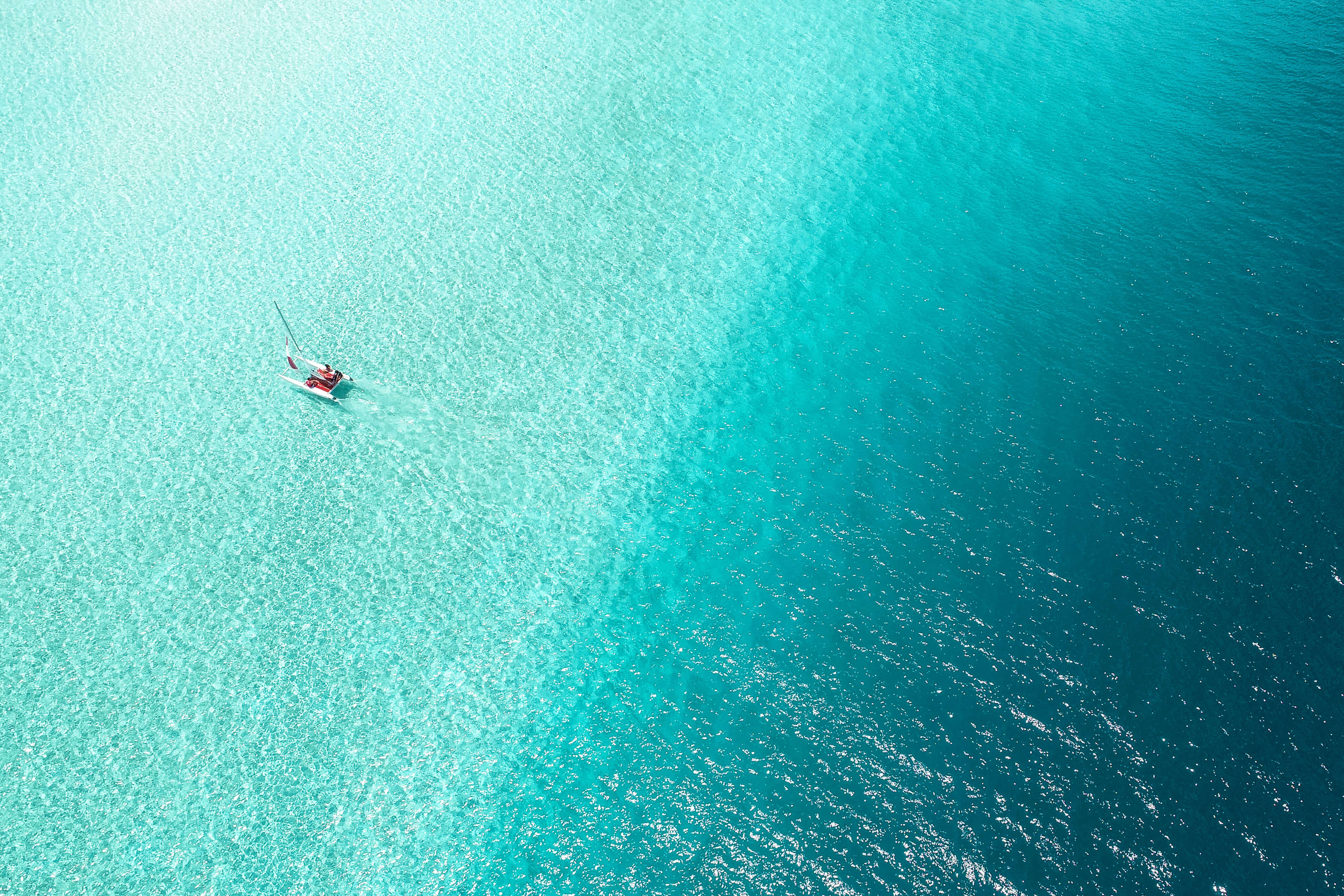1/1 Oops. Incorrect.
0%
0pts Earned
0/1correct
20/20
Tikal National Park was once inhabited by what ancient civilization?
Located in northern Guatemala’s Petén Province, the city of Tikal was once a thriving Maya metropolis that flourished from around 600 BCE to 900 CE. The site — which contains many ancient pyramids and other ruins of the Maya civilization — is now a national park nestled within a larger forest region known as the Maya Forest.
Source: UNESCOAztec
25%
Inca
19%
Olmec
9%
Maya
48%
19/20
Who or what is Central America’s Mosquito Coast named after?
The Mosquito Coast is a 40-mile-wide, 225-mile-long stretch of coastline shared by Nicaragua and Honduras along the Caribbean Sea. The area wasn’t named after the insect, but rather the Indigenous Miskito peoples, who inhabited the region long before Europeans claimed the territory in the 17th century. The Nicaraguan government reclaimed the land in 1850 thanks to the Clayton-Bulwer Treaty.
Source: BritannicaInsects
57%
Regional cuisine
2%
Native peoples
35%
Rock formations
6%
18/20
What river flows from Lake Nicaragua into the Caribbean Sea?
The 124-mile-long San Juan River, which flows along the Nicaragua-Costa Rica border, has led to many historical border disputes. The first such conflict dates to the Cañas-Jerez Treaty of 1858, which established the river as belonging to Nicaragua but allowing Costa Rican use. Nicaragua later imposed limits on Costa Rica, leading to many altercations.
Source: BritannicaSan Domingo River
21%
San Juan River
26%
San Salvador River
35%
San Sebastian River
18%
17/20
What mountain range lies on the border of Costa Rica and Panama?
The Cordillera de Talamanca is a mountain range located in southern Costa Rica and western Panama. At its highest peak — Chirripó Grande — the mountains reach an elevation of 12,530 feet. The Talamanca range combines with La Amistad National Park to form a joint UNESCO World Heritage Site, as well as the first binational UNESCO Biosphere Reserve.
Source: BritannicaTalamanca
51%
Sierra Nevada
20%
Annapurna
24%
Chuska
5%
16/20
The arc of Central America extends roughly how long?
The tapering north-south arc of Central America is roughly 1,140 miles long, and at its narrowest point is only 30 miles wide. No point in Central America is located more than 125 miles from the sea. The area of the entire region is 201,594 square miles, which is home to approximately 183 million people.
Source: Britannica140 miles
4%
540 miles
27%
1,140 miles
53%
2,040 miles
16%
15/20
What colorful landmark is a natural monument in Belize?
The Great Blue Hole Natural Monument is a giant, underwater sinkhole off the coast of Belize. The abyss is surrounded by a ring of coral extending around 1,000 feet across and descending to a depth of 400 feet. The hole is the result of a collapsed cave system and likely formed around 10,000 years ago.
Source: Travel BelizeBlue Hole
94%
Red Chasm
1%
Green Mountains
1%
Pink Beach
4%
14/20
How many islands comprise the country of Panama?
Located on the Isthmus of Panama, the country of the same name is made up of around 1,600 islands, the majority of which are located on its western coast. On the Pacific side, you’ll find the Perlas Archipelago and Coiba, Panama’s largest island. On the Caribbean side, you can find island formations such as Bocas del Toro and San Blas.
Source: Britannica5
38%
60
38%
250
16%
1,600
7%
13/20
Portions of Belize are located on which peninsula?
Though Mexico makes up the bulk of the Yucatán Peninsula, Belize and parts of northern Guatemala fill in the peninsula’s southern portion. The Yucatán Peninsula is home to the largest continuous area of tropical rainforests in Central America, and is also believed to be the site of the asteroid impact that caused a mass extinction back when dinosaurs walked the Earth.
Source: Thought Co.Baja Peninsula
10%
Yucatán Peninsula
81%
Iberian Peninsula
6%
Seward Peninsula
3%
12/20
What is the largest lake in Central America?
It’s no surprise that Lake Nicaragua is located in, well, Nicaragua. The lake spans over 3,000 square miles and sits just over 100 feet above sea level. In addition to being the largest lake in Central America, it is the ninth-largest in the Americas and the 19th-largest in the world. Indigenous people referred to it as Cocibolca, whereas Spanish conquistadors called it La Me Dulce, or the Sweet Sea.
Source: CostaRica.orgLake Arenal
11%
Lake Managua
38%
Lake Ilopango
10%
Lake Nicaragua
41%
11/20
What is the highest peak in Central America?
Located in southwestern Guatemala, Tajumulco Volcano is a stratovolcano and the highest peak in Central America, rising 13,845 feet above sea level. The peak is part of the Sierra Madre de Chiapas mountain range, which extends north into Mexico. The mountain is thought to sit atop the remains of an older volcano and features two distinct peaks.
Source: BritannicaVolcán Tajumulco
41%
Pico Bonito
14%
Alto Cuchumatanes
30%
Cerro El Pital
16%
10/20
The world’s second-largest coral reef sits along what country’s coast?
The Belize Barrier Reef is the largest coral reef in the Western Hemisphere, and the second-largest coral reef in the world after Australia’s Great Barrier Reef. The reef boasts an impressive length of over 180 miles. Its northern end sits around 1,000 feet off Belize’s coast, compared to the southern end which is 25 miles offshore.
Source: BritannicaNicaragua
4%
Costa Rica
42%
Honduras
9%
Belize
45%
9/20
Which of these is NOT a Central American capital city?
While Belize City is Belize’s most populous urban center, its capital is Belmopan — the smallest capital city in the Americas by population. The capitals of the other six Central American countries are San José in Costa Rica, San Salvador in El Salvador, Guatemala City in Guatemala, Tegucigalpa in Honduras, Managua in Nicaragua, and Panama City in Panama.
Source: World Population ReviewSan José
24%
Managua
12%
Belize City
22%
Tegucigalpa
42%
8/20
What geographic term can be used to describe Panama?
An isthmus is a narrow strip of land with bodies of water on each side that connects two larger land masses. That term describes Panama, which connects the North and South American continents and is bordered by the Atlantic and Pacific Oceans. The isthmus is around 400 miles long, and its narrowest point is around 30 miles wide.
Source: BritannicaAtoll
6%
Fjord
4%
Isthmus
84%
Plateau
6%
7/20
What portion of Panama was once a territory of the United States?
The Panama Canal Zone — a 10-mile-long strip of land extended along the Panama Canal, covering 553 square miles in total — was administered by the United States between 1903 and 1979. The zone came under U.S. control on May 4, 1904, per the Hay-Bunau-Varilla Treaty, before the treaty was officially abolished and the region returned to Panama in 1979.
Source: BritannicaCoiba Island
1%
Anton Valley
2%
Gatun Lake
4%
Canal Zone
93%
6/20
What type of climate does Central America have?
Central America is a tropical region and home to distinct rainy and dry seasons. The dry season typically occurs from December to April, and the rainy season is from May to November. The rainy season coincides with the region’s hurricane season. Temperatures in Central America usually range from 50 to 90 degrees Fahrenheit.
Source: Trip SavvyTemperate
11%
Tropical
88%
Continental
1%
Polar
0%
5/20
Most of Central America is located in which time zone?
Along with the majority of the central United States and Mexico, six of the seven Central American countries fall within the Central Time Zone. Only Panama finds itself in the Eastern Time Zone, along with its South American neighbor Colombia. The Central American countries do not observe daylight saving time and follow standard time throughout the year.
Source: World AtlasEastern Time Zone
18%
Central Time Zone
56%
Mountain Time Zone
13%
Pacific Time Zone
13%
4/20
What is the largest Central American country by area?
Coming in just ahead of Honduras, Nicaragua’s total area is 46,464 square miles. Even though it’s the largest Central American country by area, it pales in population size to the most populated Central American nation, Guatemala. The smallest country in the region by area is El Salvador, at just 8,000 square miles, though it is also the Central American nation with the highest population density.
Source: World Population ReviewNicaragua
43%
Honduras
21%
Guatemala
26%
El Salvador
10%
3/20
What body of water touches almost all Central American nations?
The Caribbean Sea borders Central America to the east, and every country in the region, except El Salvador, shares a coastline with the sea. On the western side, each nation except Belize shares a coastline with the Pacific Ocean.
Source: Nations OnlineGulf of Mexico
42%
Southern Ocean
2%
Caribbean Sea
30%
Pacific Ocean
26%
2/20
What is the most populous country in Central America?
Guatemala is the most populous country in Central America, with upwards of 18 million residents — nearly double that of the second-most populous country, Honduras. The least populous country, with 400,000 residents, is Belize. Guatemala’s capital, Guatemala City, is also Central America’s most populous metro area, home to about 3.7 million people.
Source: World Population ReviewGuatemala
39%
Costa Rica
25%
Nicaragua
33%
Belize
3%
1/20
Which of these countries is NOT part of Central America?
Central America is the southernmost region of the North American continent, and is composed of seven nations: Belize, Costa Rica, El Salvador, Guatemala, Honduras, Nicaragua, and Panama. The region borders Colombia to the south and Mexico to the north. However, some geographers consider Central America’s boundary to extend further north to the Isthmus of Tehuantepec in Mexico.
Source: BritannicaBelize
24%
Costa Rica
8%
Colombia
60%
Panama
9%
Play Quizzes By Category
Play A Trending Quiz
Trending, related and recent quizzes you may be interested in







